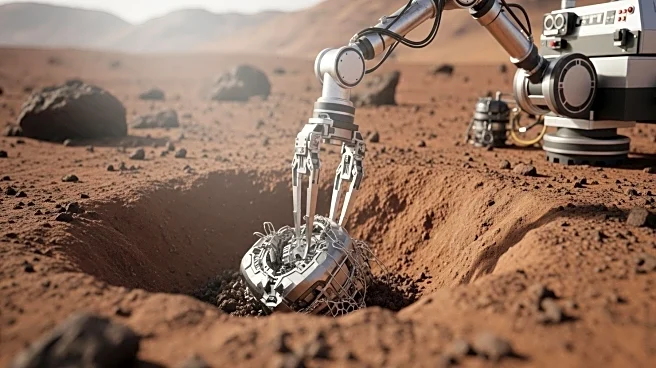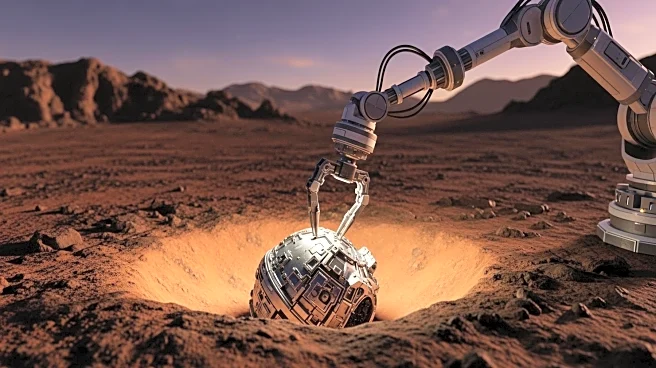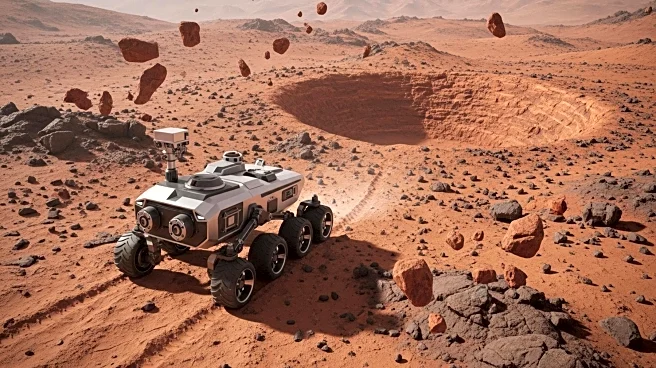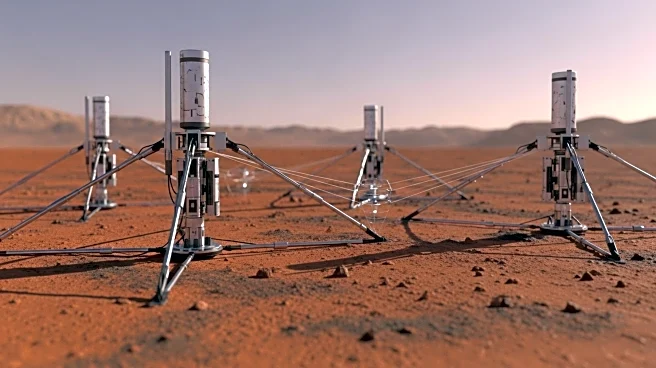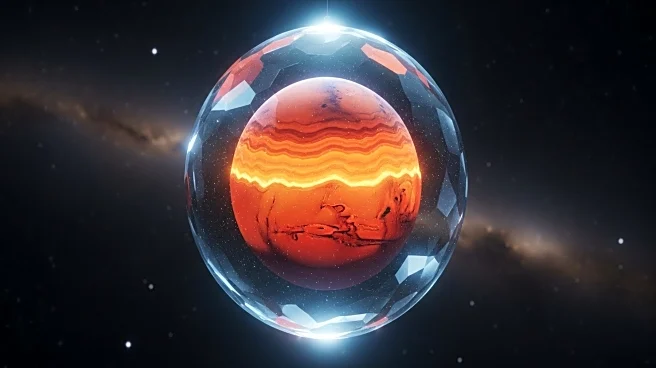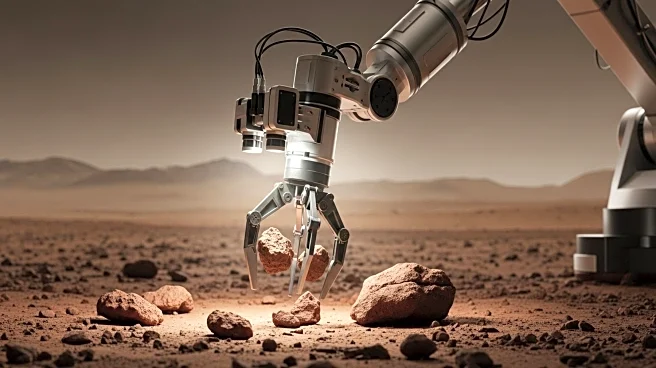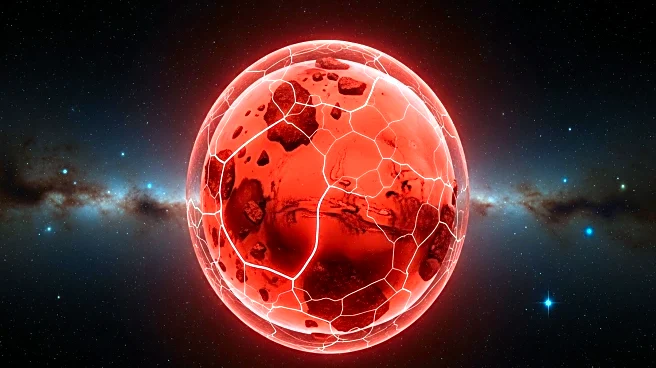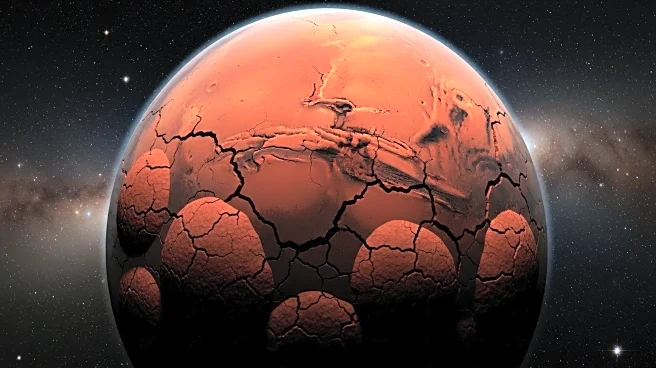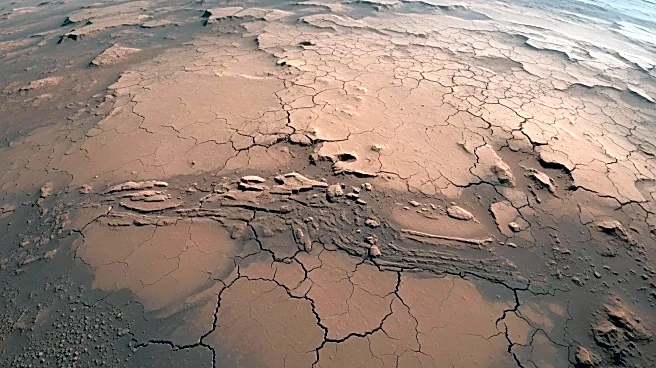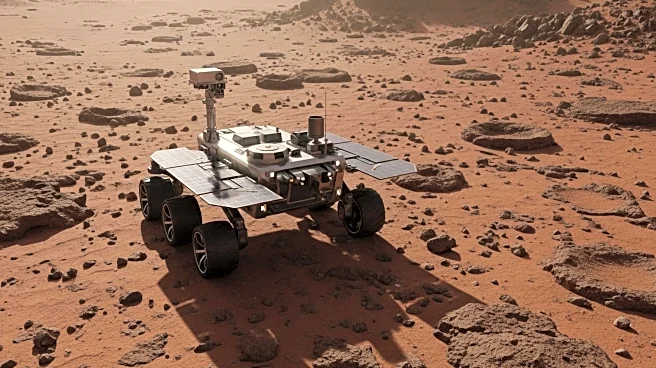What's Happening?
Recent research has revealed that fragments from massive space debris, which struck Mars approximately 4.5 billion years ago, are buried deep beneath the planet's surface. This discovery was facilitated by NASA's retired InSight lander, equipped with a sensitive seismometer that recorded over 1,300 marsquakes during its mission. The data collected allowed scientists to map Mars' crust, mantle, and core, showing how seismic waves are affected by the planet's internal structure. Unlike Earth, Mars lacks tectonic plates, meaning its seismic activity is primarily caused by cracking rocks and meteoroid impacts. The study highlights the presence of ancient fragments within Mars' mantle, suggesting a slow evolutionary process over billions of years.
Why It's Important?
The findings from NASA's InSight mission provide significant insights into the geological history and evolution of Mars. Understanding the planet's internal structure and the remnants of ancient collisions can offer clues about the formation and development of other rocky planets in the solar system, such as Venus and Mercury. This research enhances our knowledge of planetary science and could inform future exploration missions. The survival of these ancient fragments indicates a sluggish mantle evolution, contrasting with Earth's dynamic geological processes, which often erase such features.
What's Next?
Although the InSight mission has ended, scientists continue to analyze the data collected to further understand Mars' geological history. Current Mars rovers lack seismometers, but ongoing research may lead to new missions equipped to study seismic activity on Mars. These efforts could deepen our understanding of Mars and its potential for past life, as well as inform future human exploration of the planet.
Beyond the Headlines
The study raises broader questions about the formation and evolution of rocky planets in the solar system. The presence of ancient debris within Mars' mantle suggests a unique geological history that may differ significantly from Earth. This research could lead to a reevaluation of how planets develop and sustain geological features over billions of years.
